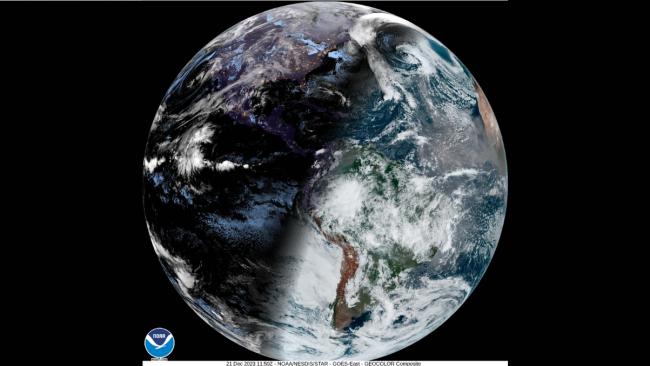1 year of weather captured in epic time-lapse video
The seasons are changing around the world, an event marked by the December solstice, which, for the United States, brings the shortest day and the longest night of the entire year.
The seasons are the result of Earth's tilt. The planet is askew by 23.5 degrees, meaning that as the Earth rotates around the sun, the balance between the amount of daylight and nighttime is constantly in motion. When the Northern Hemisphere is tilted toward the sun, there is more daylight, resulting in summer. When the Northern Hemisphere is tilted away from the sun, the nights last longer than the days, resulting in winter.
 |
This gradual change between the seasons can be seen on the timelapse from NOAA's GOES-East weather satellite, which is stationed around 23,000 miles above the Earth's surface.
Happy #WinterSolstice! 🌎🌄❄️
Astronomical winter officially starts at 10:27 pm EST, marking the longest night in the Northern Hemisphere. Enjoy a year-long visual journey with daily images from @NOAA's #GOESEast 🛰️, showing the changing seasons due to Earth's 23.5° tilt. pic.twitter.com/EWsUEnrxOr— NOAA Satellites (@NOAASatellites) December 21, 2023
While the December solstice marks the official start to astronomical winter in the Northern Hemisphere, it also signals the beginning of the long climb out of darkness.
The amount of sunlight will increase slowly, but steadily, every day following the December solstice. The additional daylight is slow at first but will compound over time until the next solstice on June 20 -- the longest day of 2024 for locations north of the equator.
Want next-level safety, ad-free? Unlock advanced, hyperlocal severe weather alerts when you subscribe to Premium+ on the AccuWeather app. AccuWeather Alerts™ are prompted by our expert meteorologists who monitor and analyze dangerous weather risks 24/7 to keep you and your family safer.



